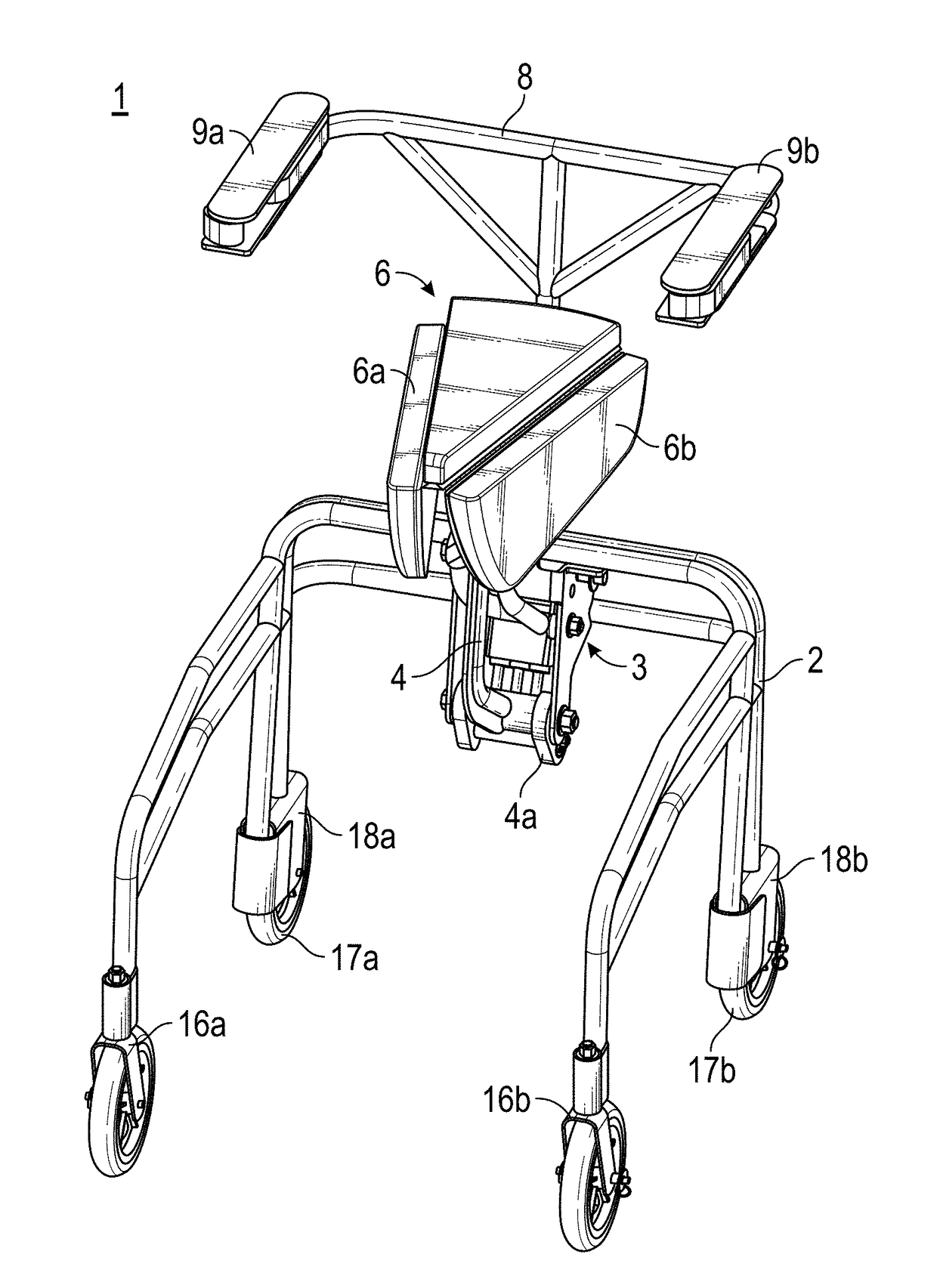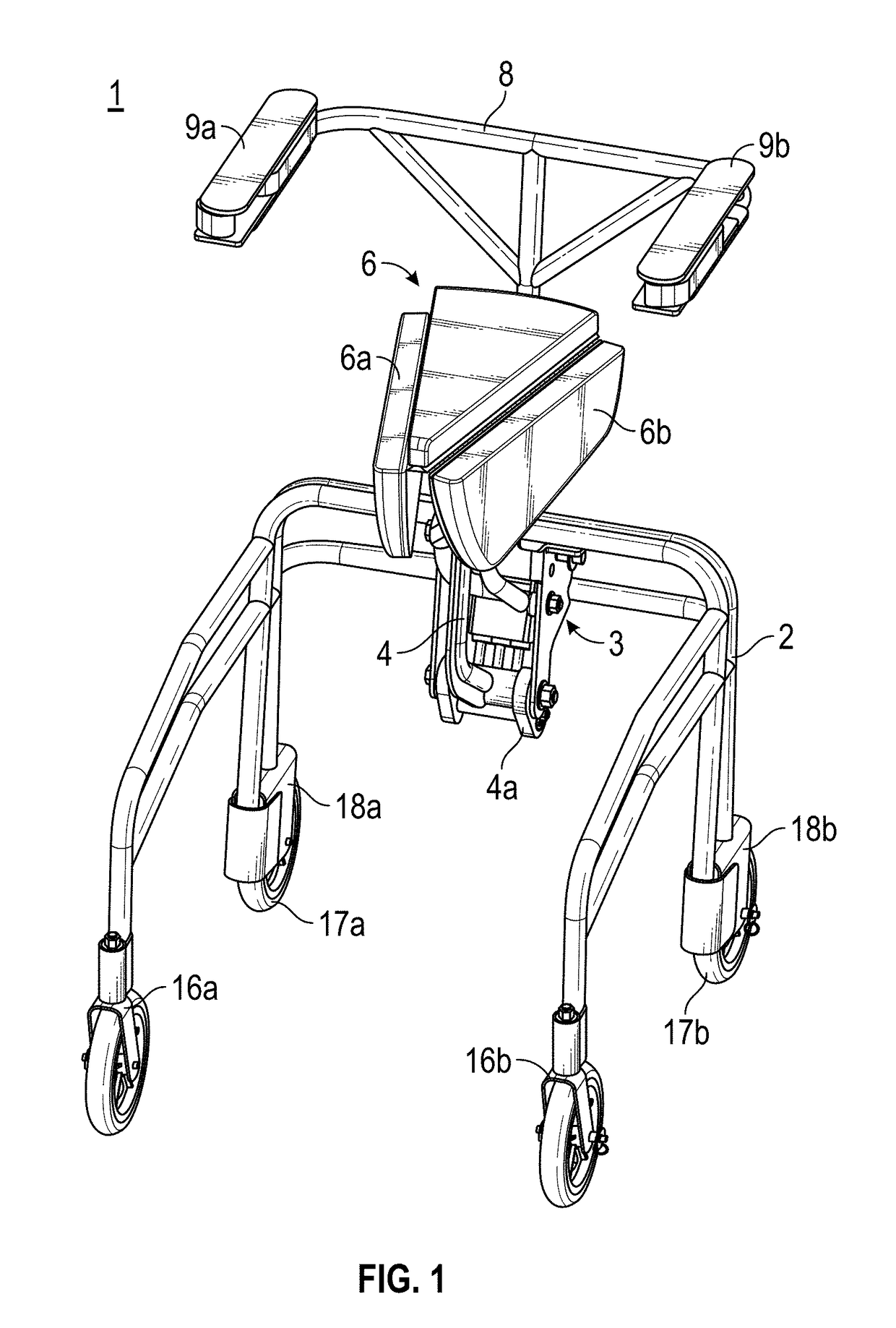Elevating walker chair
a walker and chair technology, applied in the field of walker chairs, can solve the problems of inability to use, inherently dangerous, slow and isolating walkers, and existing stand-up walkers, and achieve the effects of facilitating sitting and rising up, facilitating normal gait, and preventing falling
- Summary
- Abstract
- Description
- Claims
- Application Information
AI Technical Summary
Benefits of technology
Problems solved by technology
Method used
Image
Examples
Embodiment Construction
[0031]FIG. 1 depicts a perspective view of an elevating walker chair 1 according to an illustrative embodiment of the invention, seen in its elevated ‘walking’ position, including wheeled frame 2 attached to lifting chassis 3, components of which resiliently pivot lifting extension frame 4a downward and attached lifting strut 4 upward, with a force calibrated to permit folding saddle / seat 6 to equipoise its occupant by counterbalancing the occupant's weight to provide an essentially “weightless” condition, as the frame rises toward the upward limit of its parallelogram-supported excursion.
[0032]Armrest / seat back frame 8 is attached to seat mounting block 7 (shown in FIG. 10), and supports armrest assemblies 9a, 9b. Left and right folding seat wings 6a, 6b are shown folded downward in the ‘saddle’ position, which is suitable for elevated seating. Armrests 6a,b are shown in a retracted position, but can be optionally forward deployed, which can aid in supporting the torso in a positio...
PUM
 Login to View More
Login to View More Abstract
Description
Claims
Application Information
 Login to View More
Login to View More - R&D
- Intellectual Property
- Life Sciences
- Materials
- Tech Scout
- Unparalleled Data Quality
- Higher Quality Content
- 60% Fewer Hallucinations
Browse by: Latest US Patents, China's latest patents, Technical Efficacy Thesaurus, Application Domain, Technology Topic, Popular Technical Reports.
© 2025 PatSnap. All rights reserved.Legal|Privacy policy|Modern Slavery Act Transparency Statement|Sitemap|About US| Contact US: help@patsnap.com



